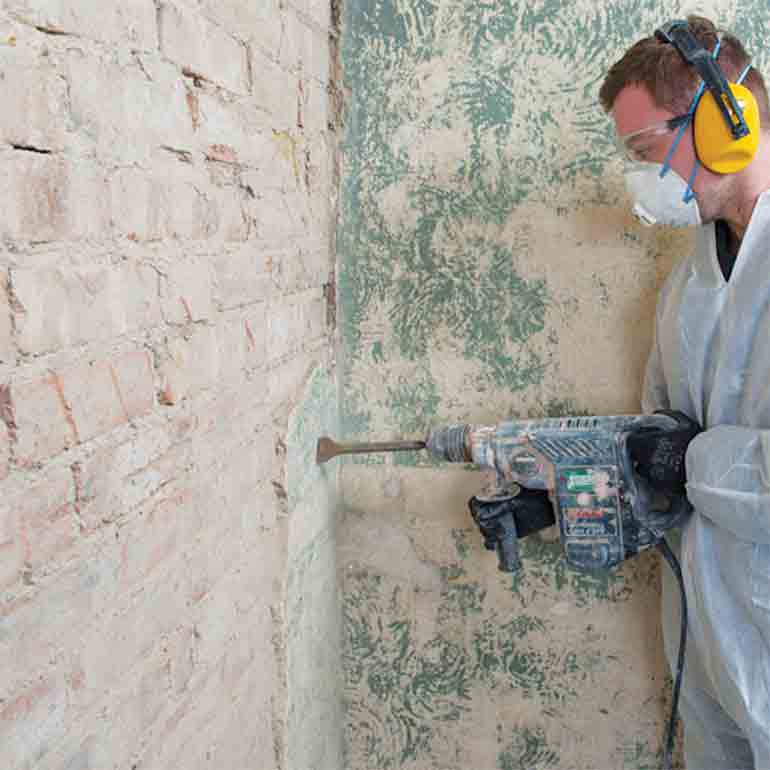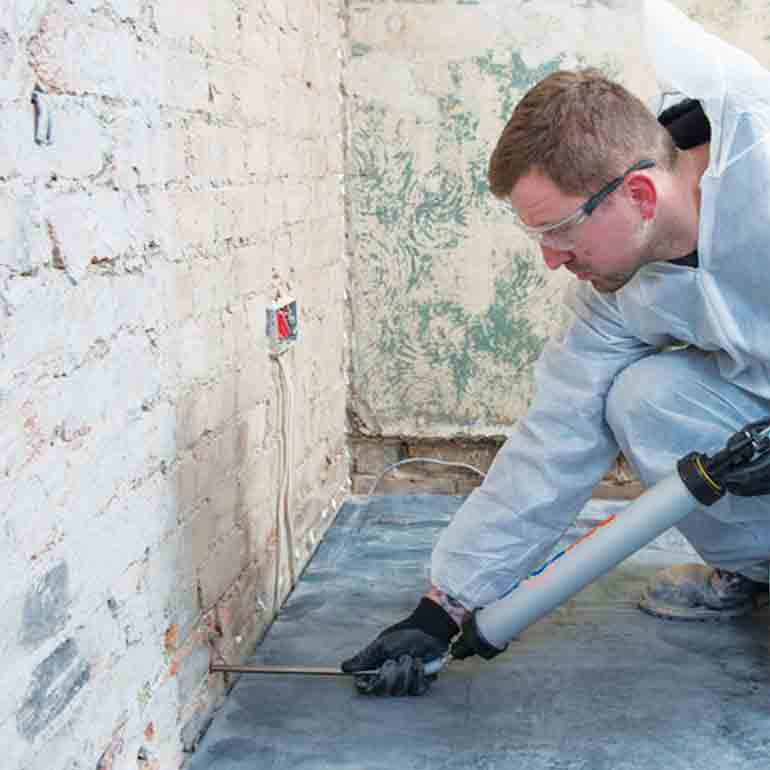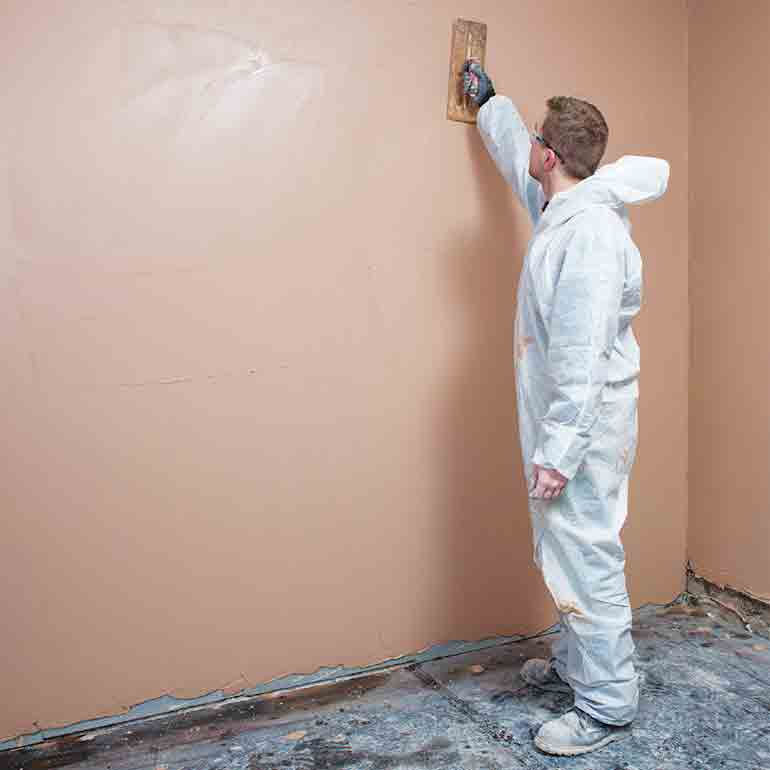
1. Prepare the wall
In most cases it is necessary to remove the damp/salt contaminated plaster before the Dryzone System can be used..

2. Inject Dryzone damp-proofing cream
Dryzone damp-proofing cream is injected in the usual way. The success of the Dryzone system relies on the high-level of performance provided by Dryzone damp-proofing cream in walls of all types.

3. Apply Dryshield
The Dryshield Cream resists salts that are already present in the wall as a result of historic rising damp. It also acts as a primer for the Drygrip Adhesive – maximising bond strength to the masonry substrate.

4. Fix plasterboard with Drygrip
Drygrip Adhesive has been specifically designed to provide an excellent bond onto masonry surfaces and to be resistant to moisture and salts. Dryzone System Fixing Plugs are used to hold the plasterboard in position. They are not used to hold the weight of the board – just to allow a smooth join between boards.

5. Finish the job
Apply the final skim coat using a suitable gypsum-based skim plaster. Alternatively dry-joint the boards or simply wallpaper for an even quicker result.

FOLLOW US